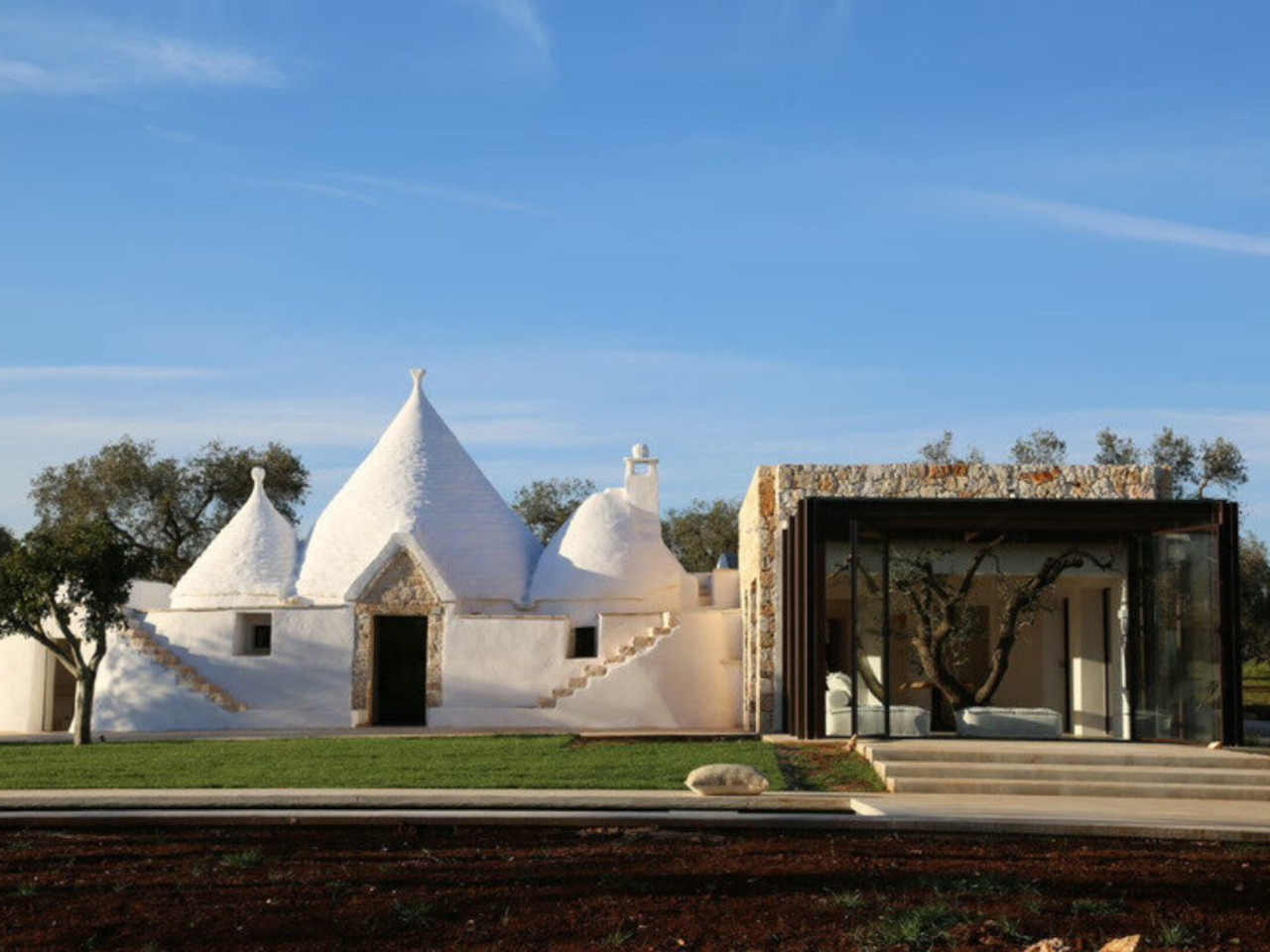
EV Signature has masterfully renovated a historic complex of four trulli and three lamie in San Michele Salentino, Italy, creating a seamless fusion of contemporary aesthetics and traditional architecture. This project, aptly named Glass Tree, epitomizes how modern design can harmoniously coexist with and even enhance cultural heritage.
Designer: EV Signature
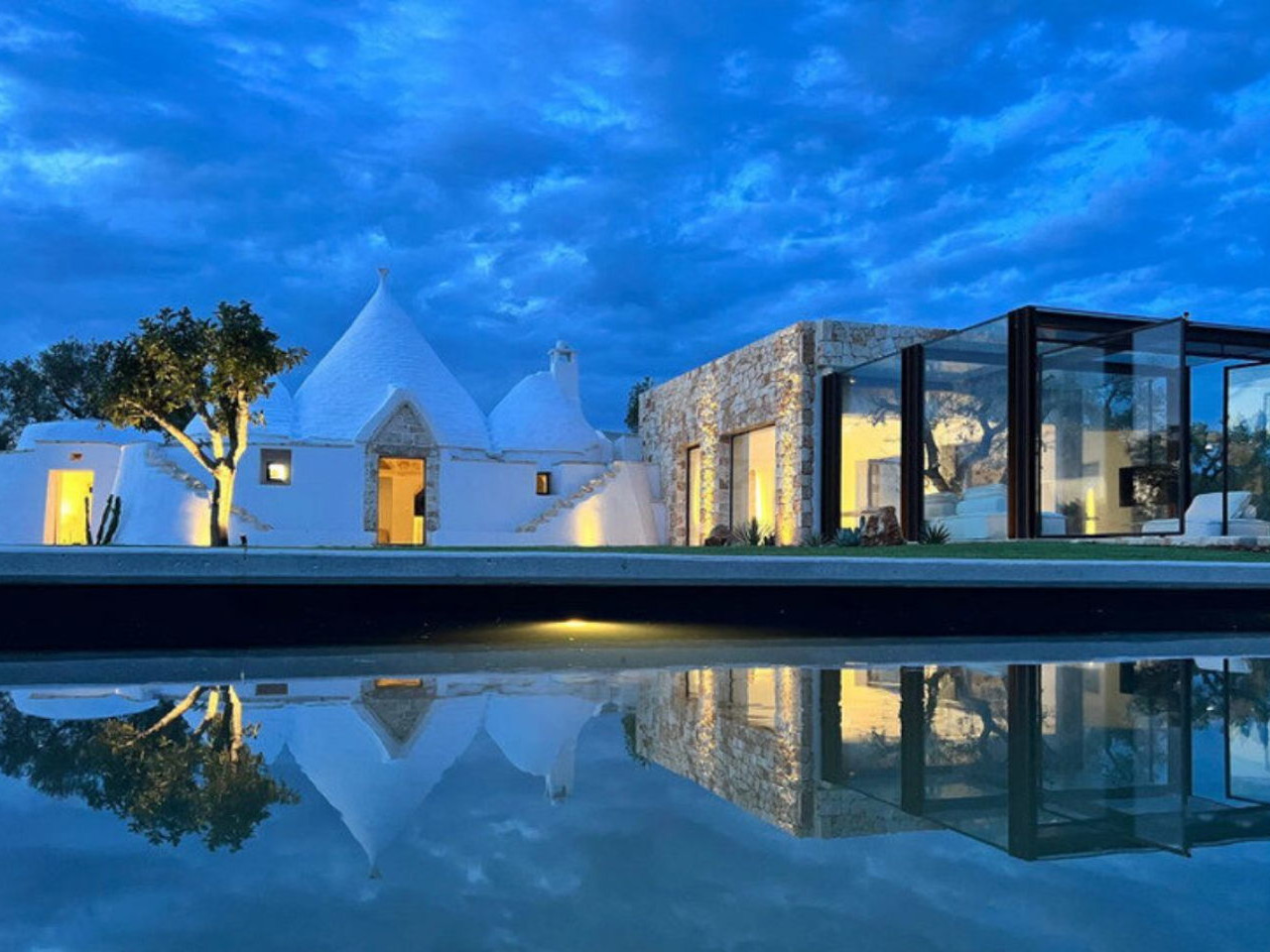
The trulli and lamie structures, indigenous to the region, are celebrated for their unique architectural elements. Trulli, with their iconic conical roofs and dry stone construction, provided effective insulation against the scorching Italian sun for ancient inhabitants. Lamie, known for their sturdy stone build and vaulted ceilings, similarly offered a cool refuge from the heat. These historical elements have been preserved and integrated into the renovation, maintaining the essence of the original structures.
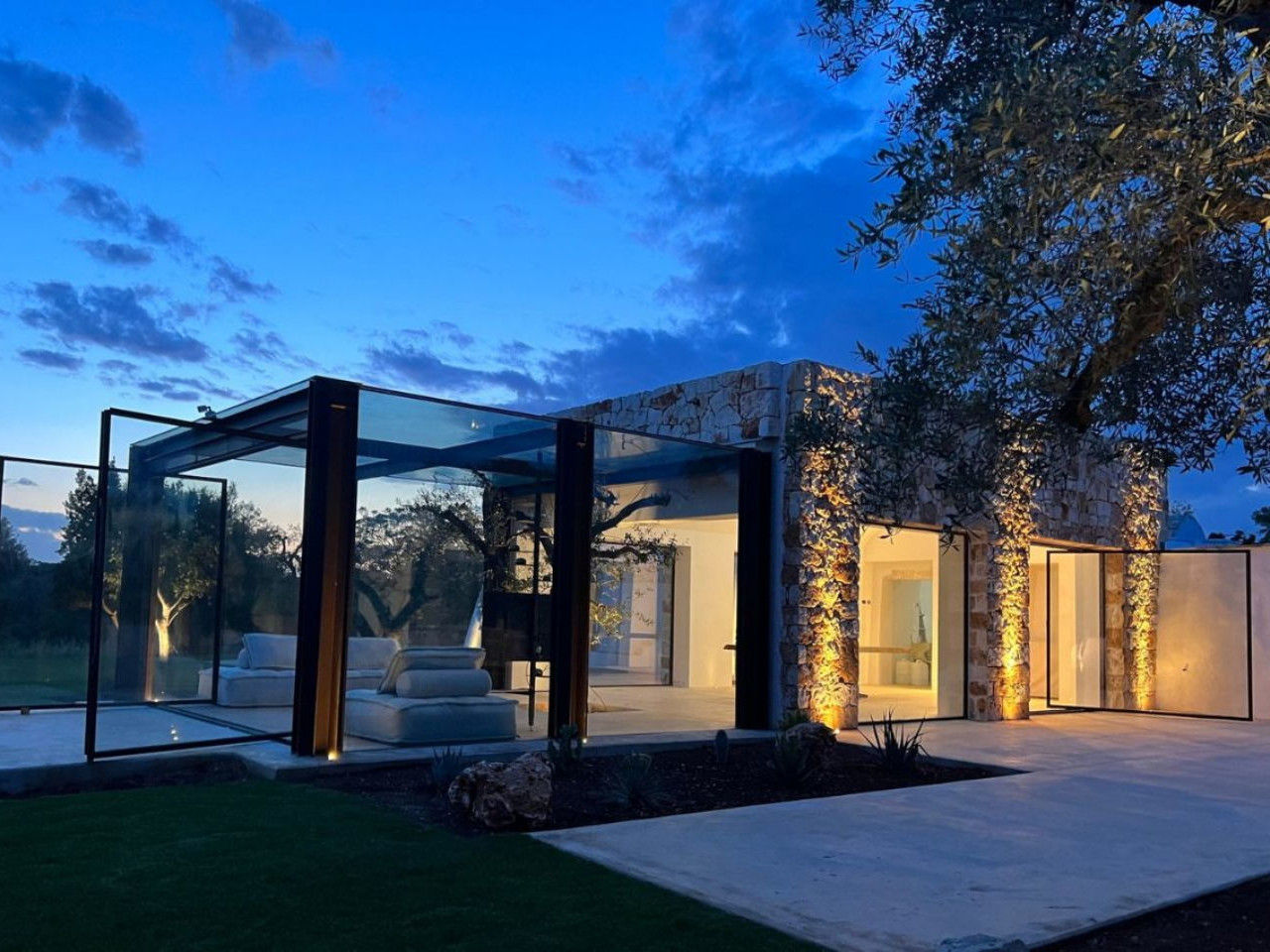
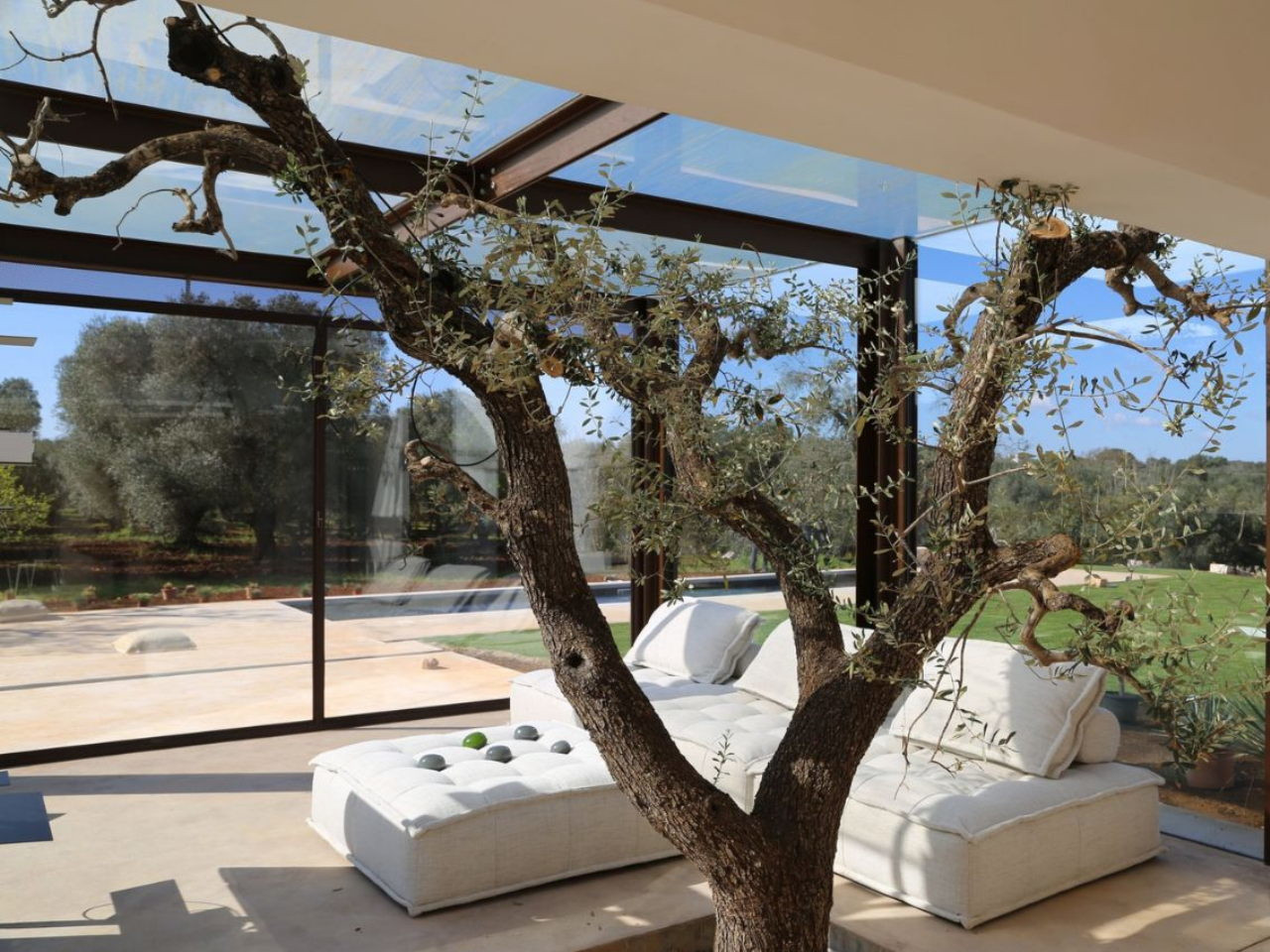
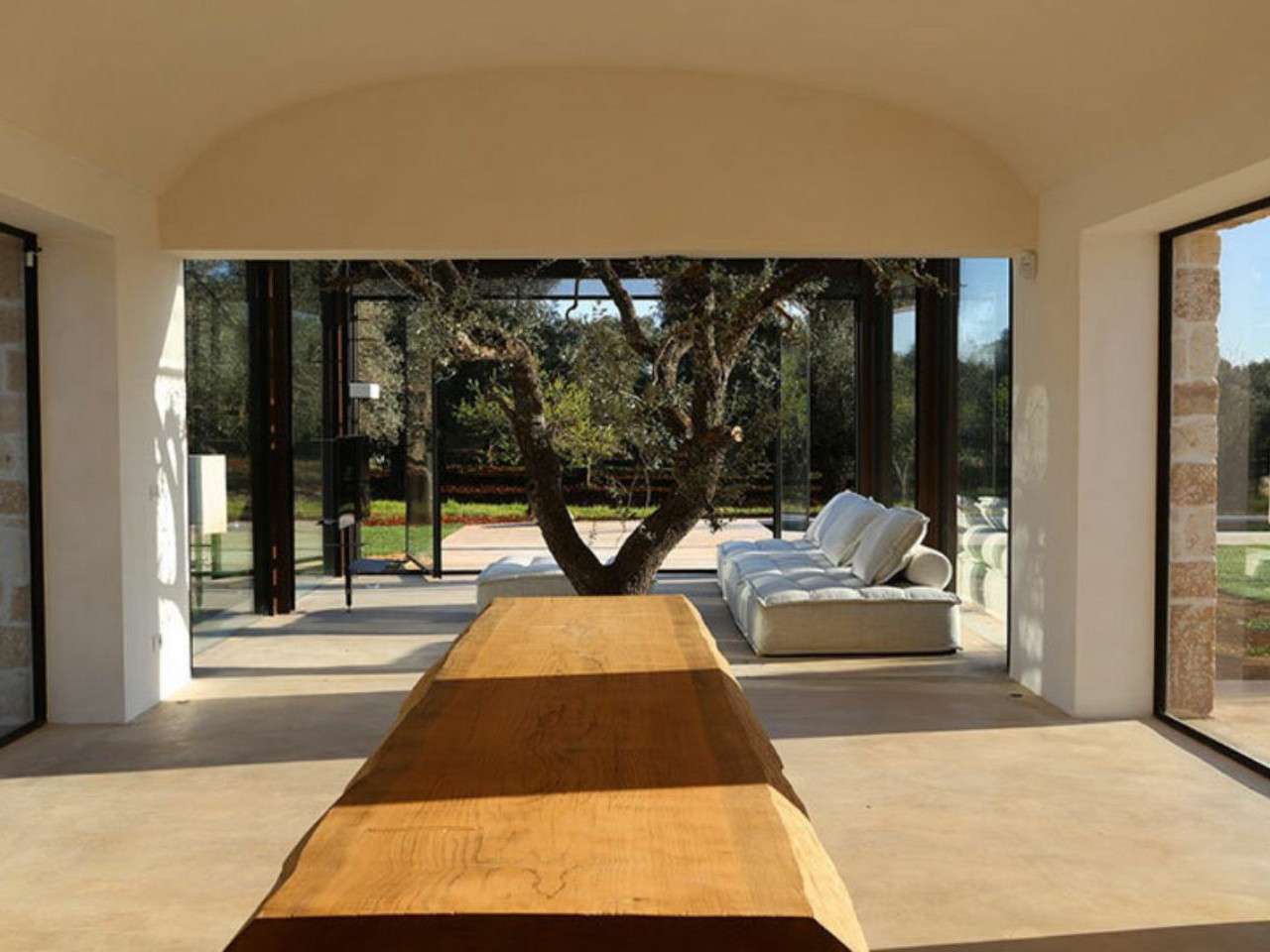
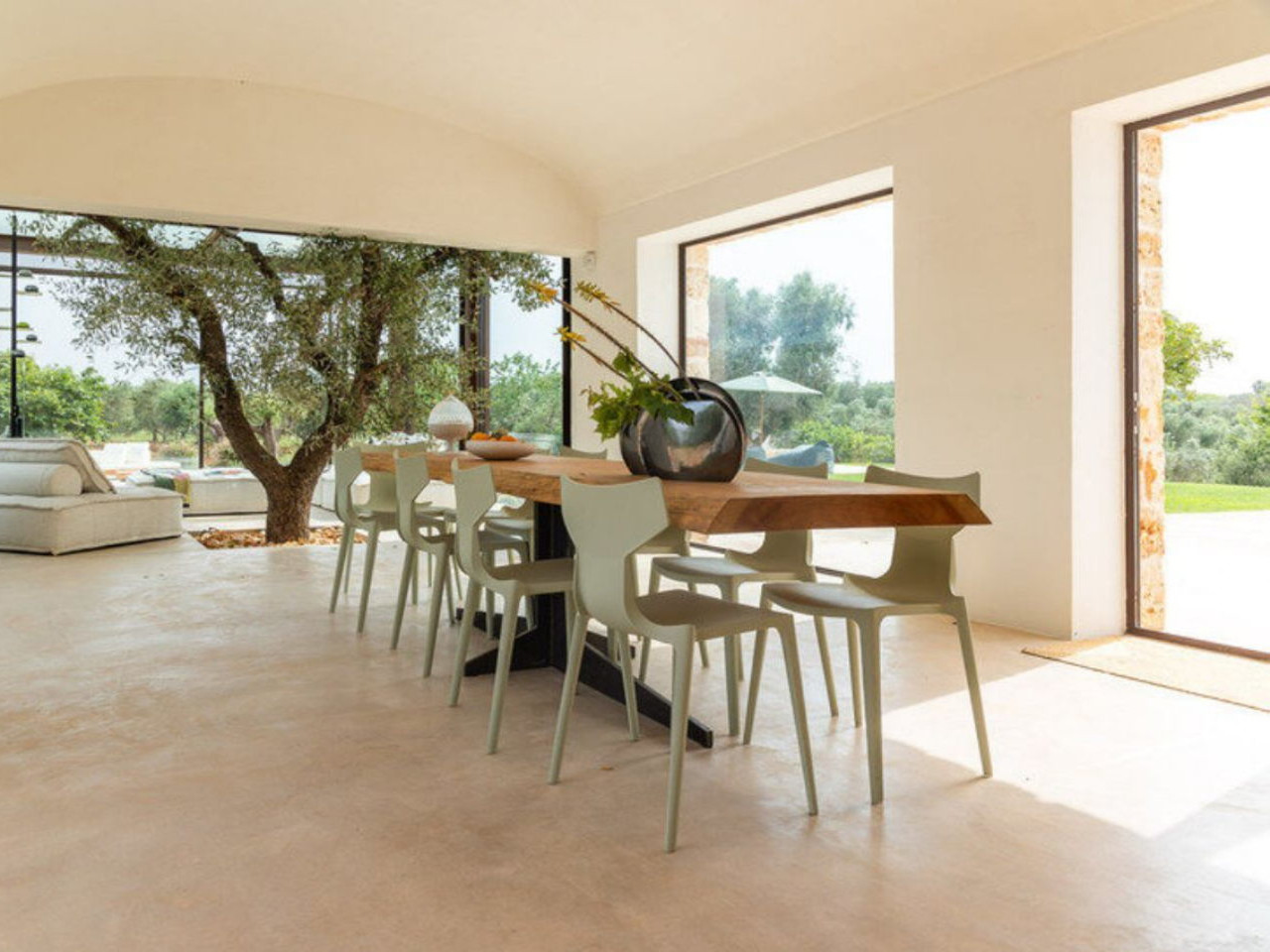
The renovation introduces contemporary elements without compromising the historical charm. The centerpiece of the project is a modern living room encased in a fully transparent space framed in Corten steel. This innovative design feature allows natural light to flood the interior while offering uninterrupted views of the surrounding landscape. At the heart of this space stands an ancient olive tree, symbolizing the project’s name, Glass Tree, and representing a harmonious blend of nature and architecture.
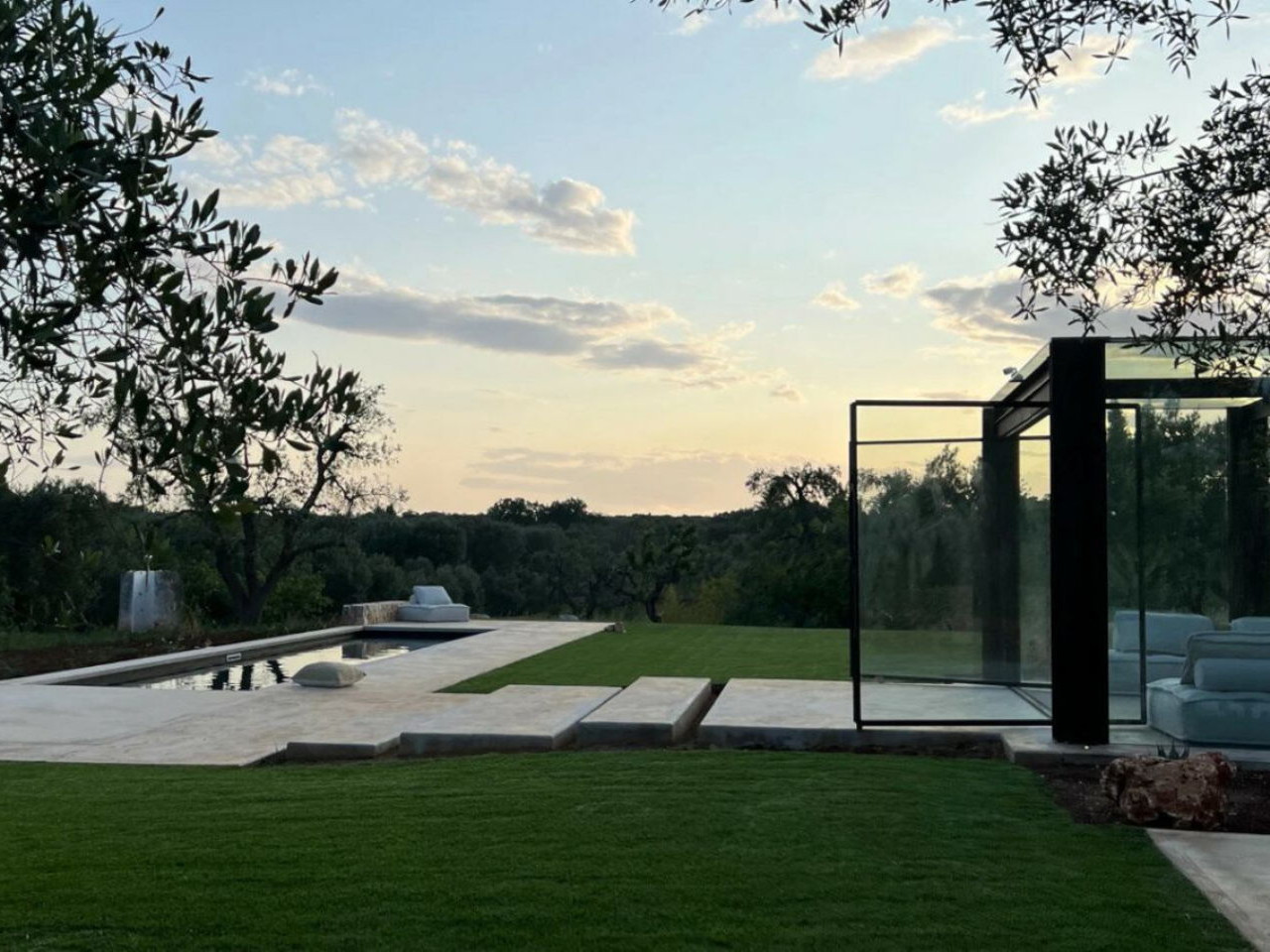
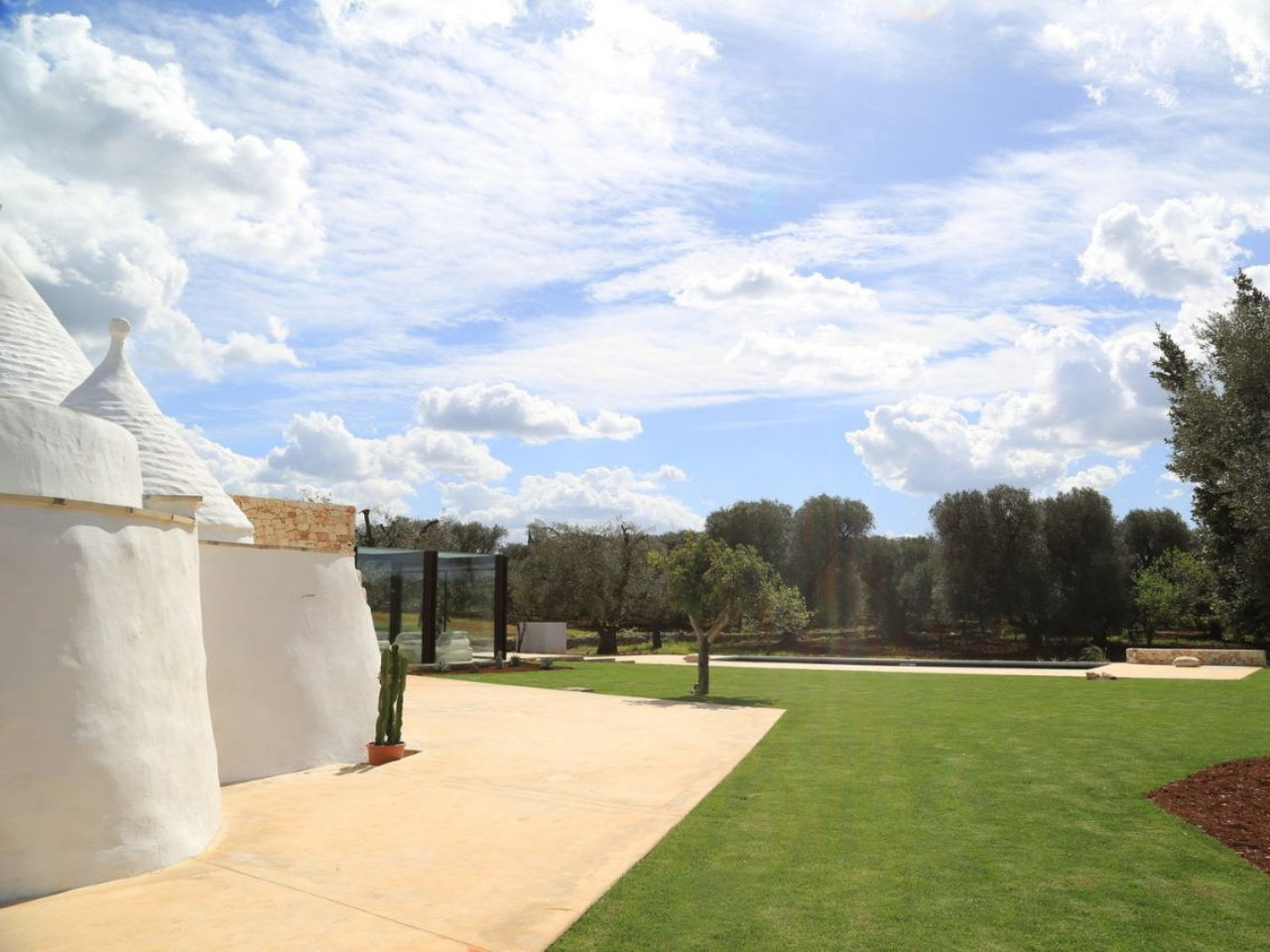
EV Signature’s design philosophy emphasizes the dissolution of boundaries between indoor and outdoor spaces. Extensive excavation and landscaping have created a spacious courtyard that complements the overall design. Large pivoting windows blur the lines between the interior and the exterior, offering views of the swimming pool and inviting year-round enjoyment.
The interior spaces reflect a careful balance of luxury and authenticity. Bathrooms and kitchens feature unique elements such as sinks and islands crafted from locally carved monoliths. These pieces, with their exposed edges, exude a sense of luxury while preserving the heritage vibe of the site. The sunk-in bathtub evokes the ambiance of a Moroccan or Turkish hammam, enhancing the sense of opulence.
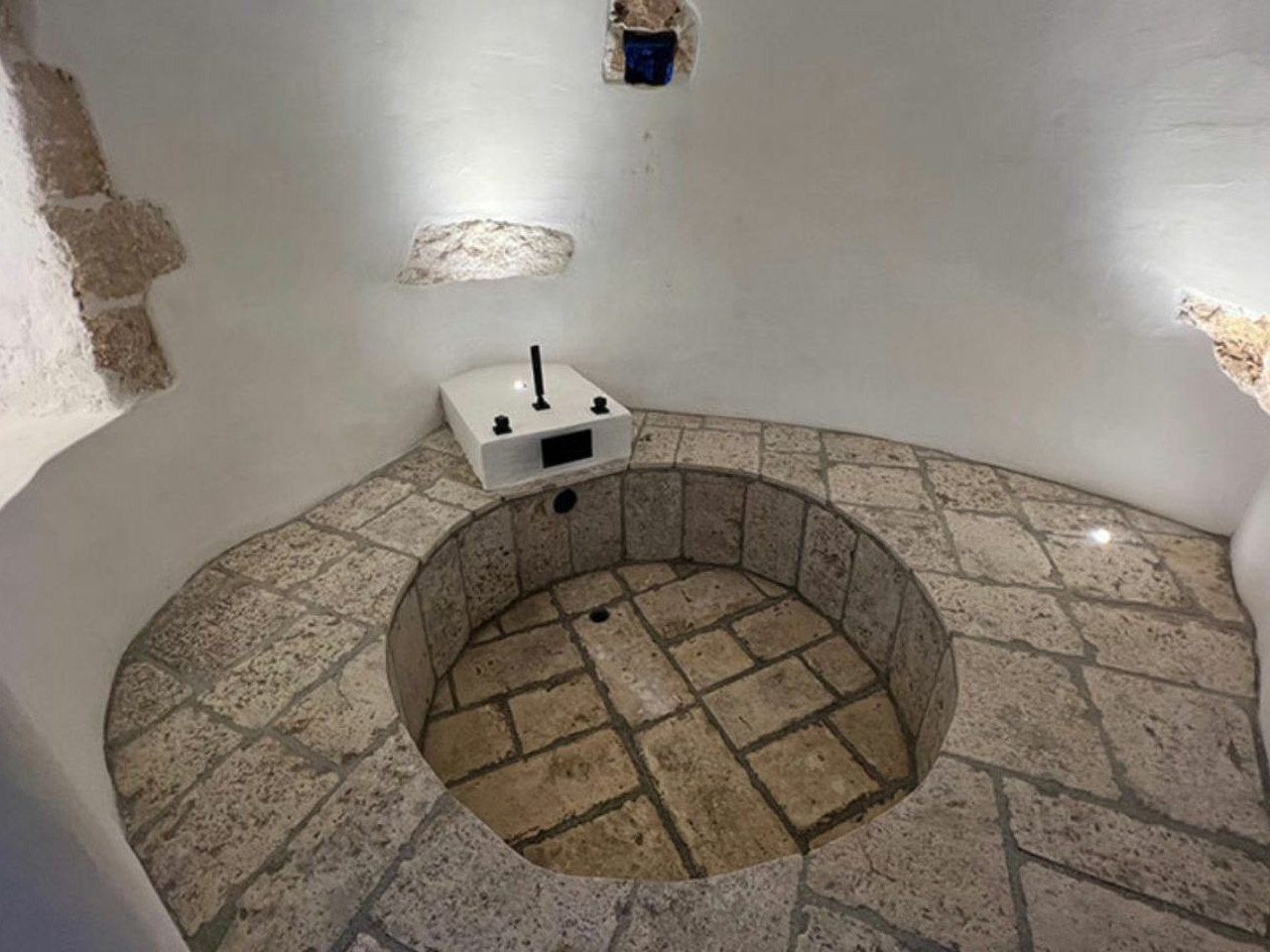
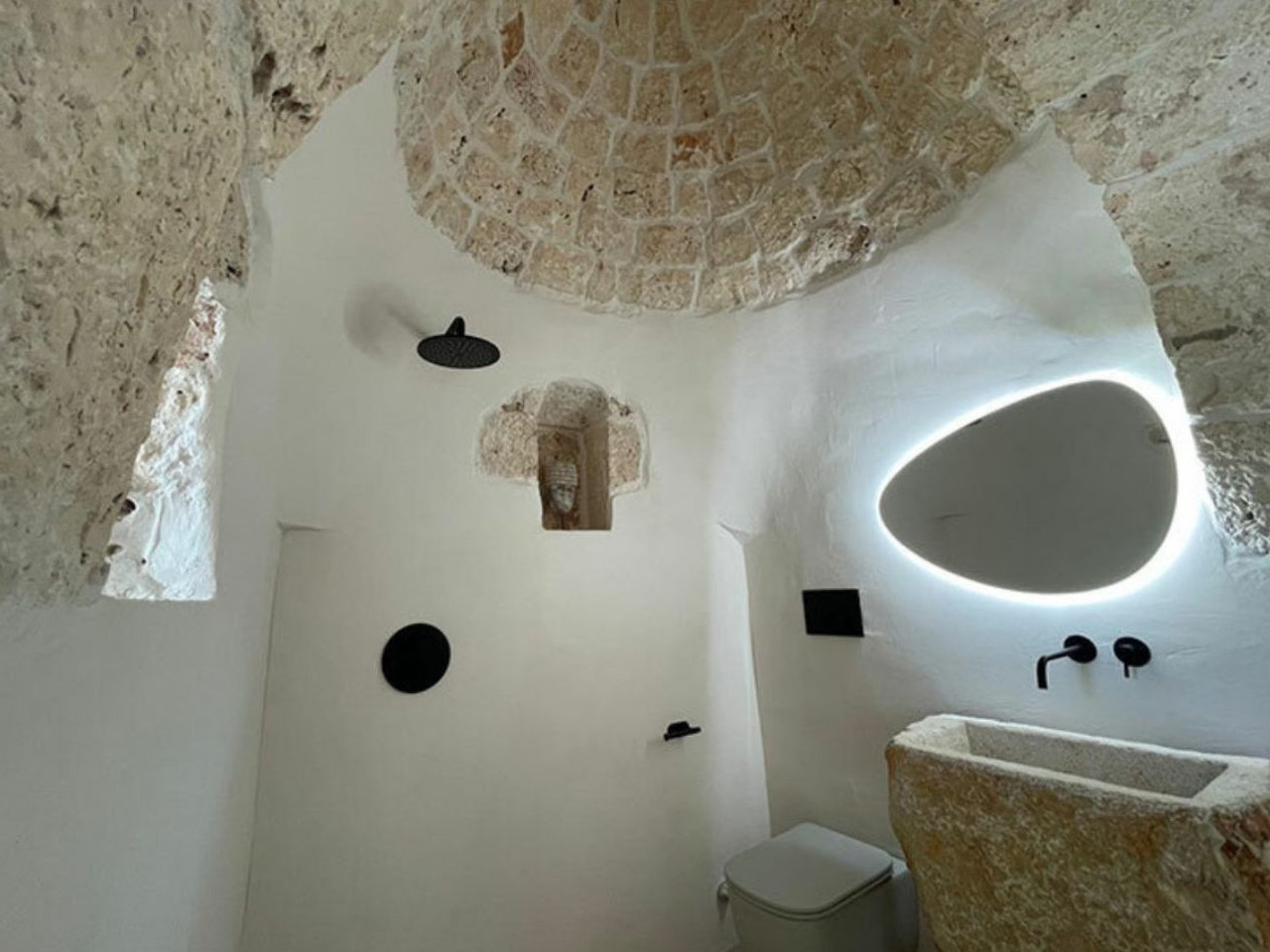
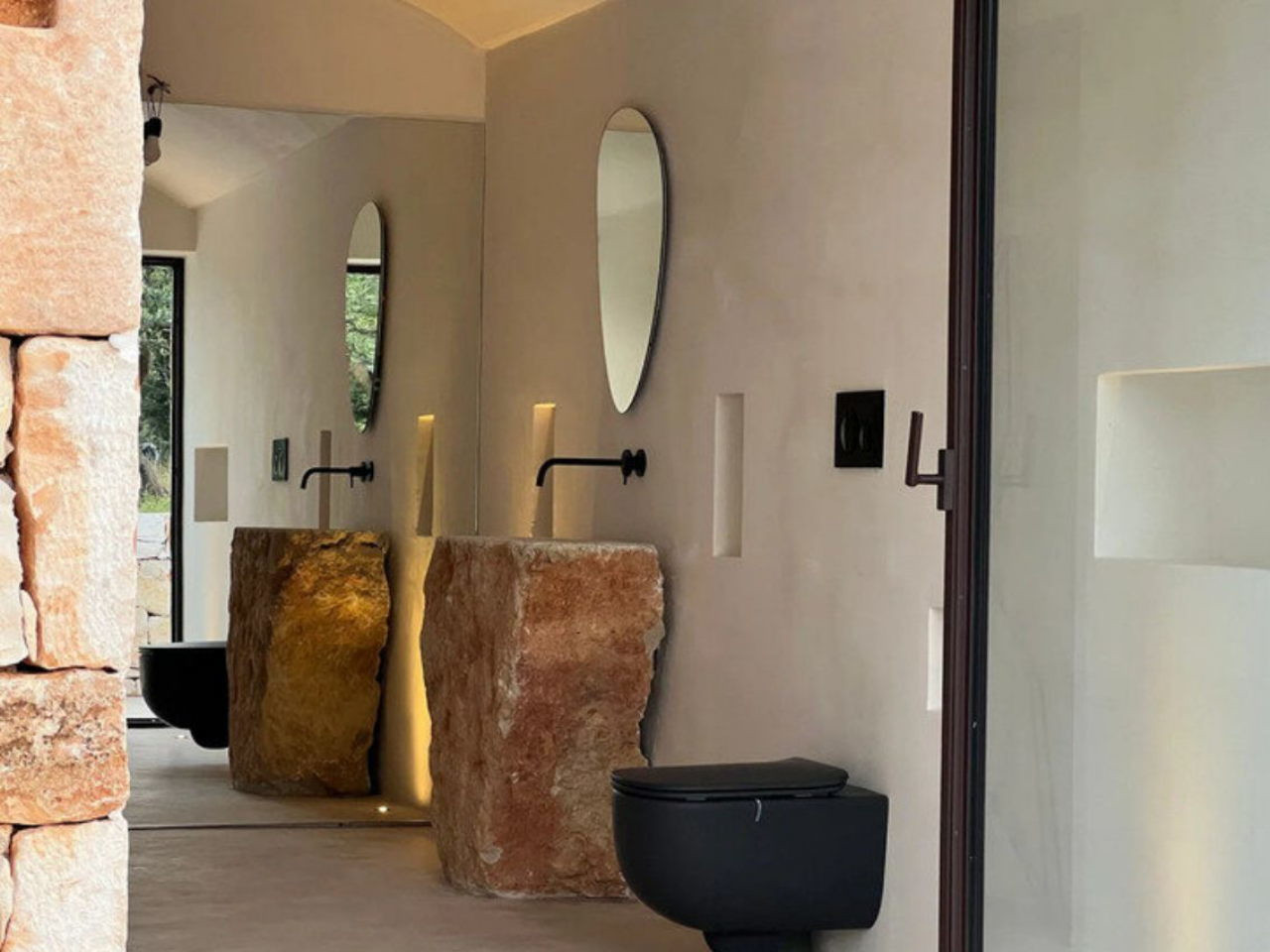
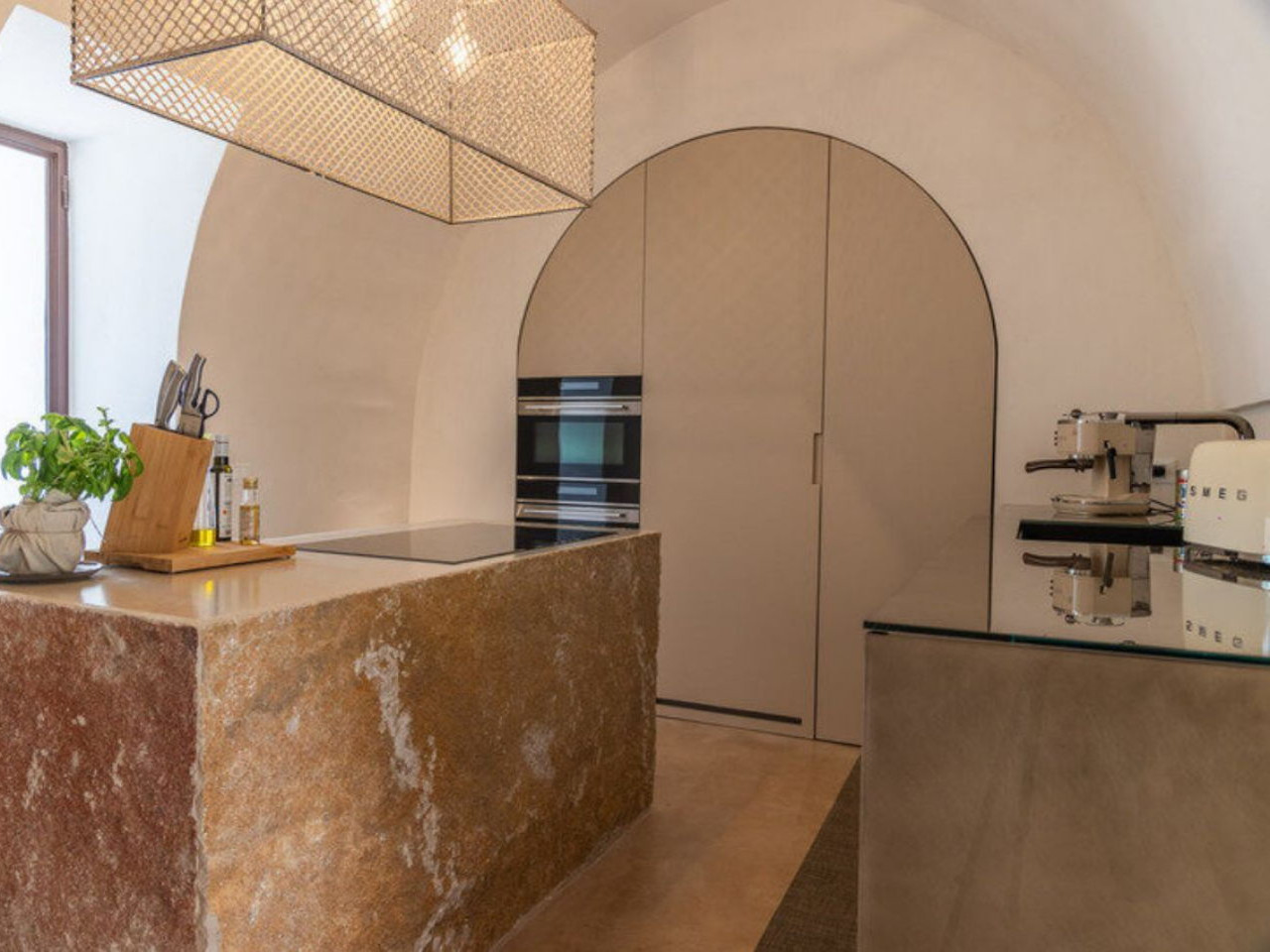
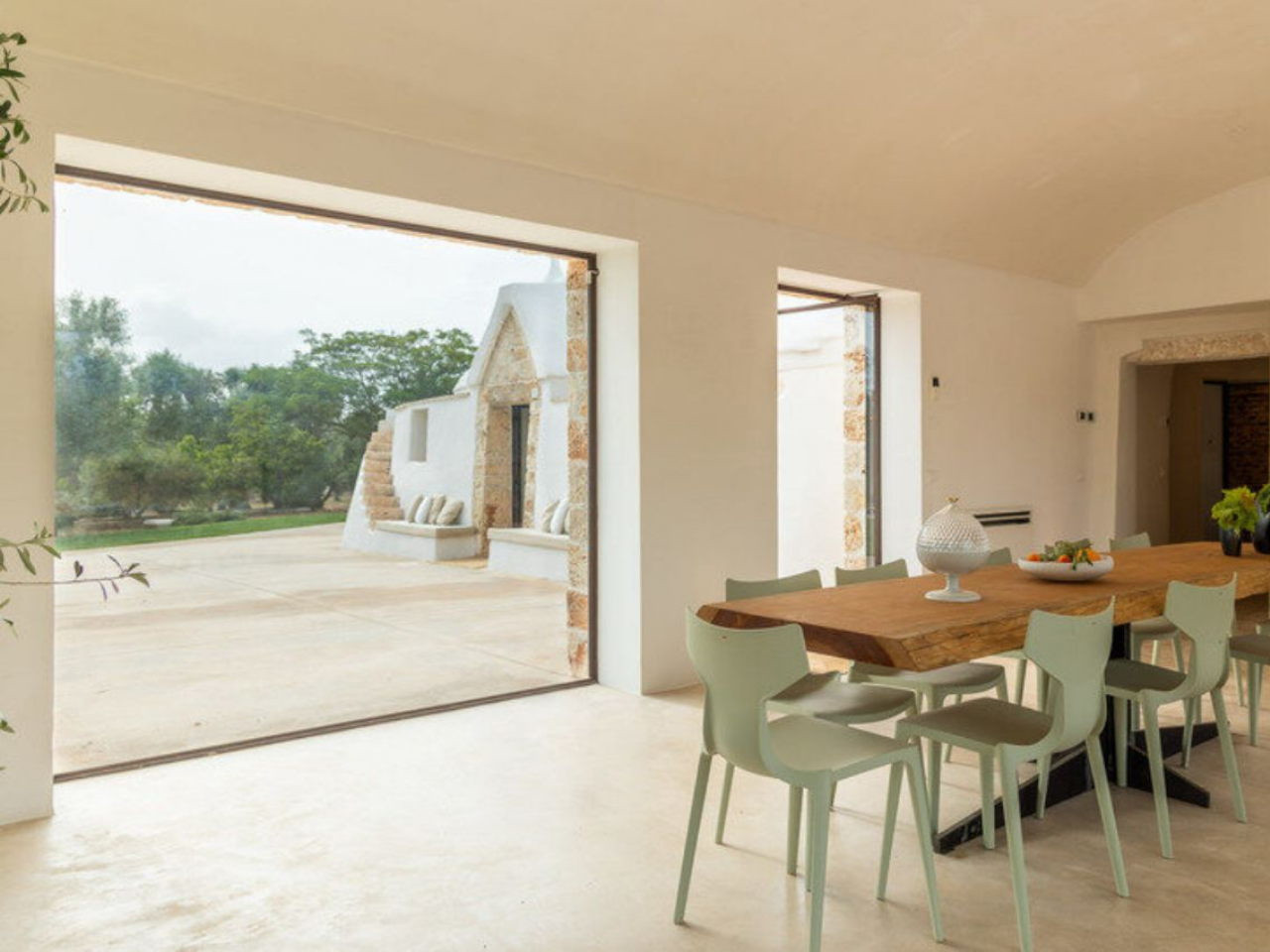
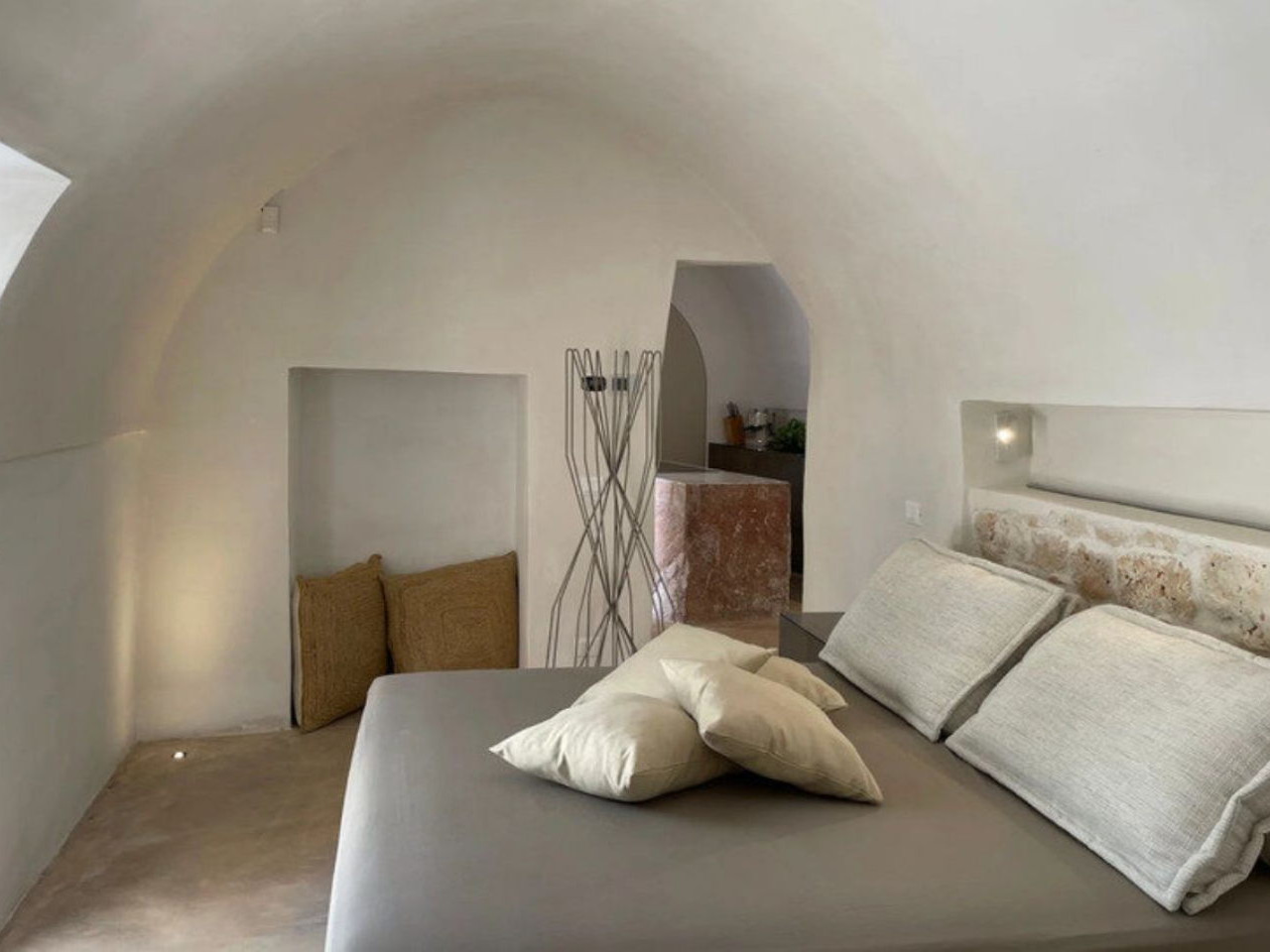
To maintain aesthetic consistency, the architects have chosen to showcase local stone on parts of the walls, restoring them meticulously. Other areas are treated with organic lime wash and rustic plaster, achieving a polished yet historically resonant look. The dining area, treated with these materials, offers a flatter, polished appearance that still matches the heritage aesthetic.
At night, the complex transforms into a magical setting with recessed uplights in the outdoor floors highlighting the contours of the stone and the trulli. The swimming pool, illuminated with LED lights on the sides, becomes a focal point, inviting residents and guests to enjoy a dip any time of the day or year round.
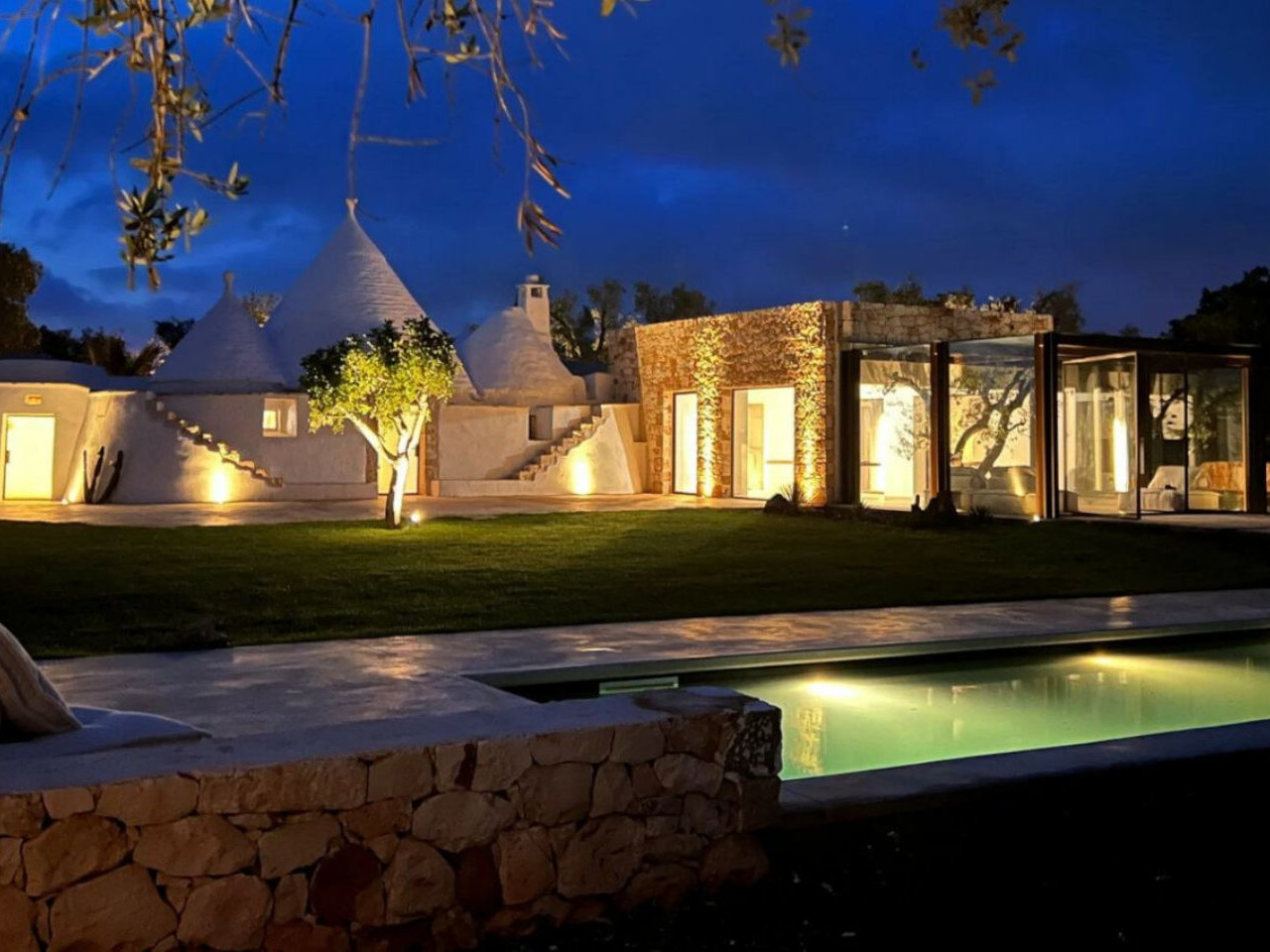
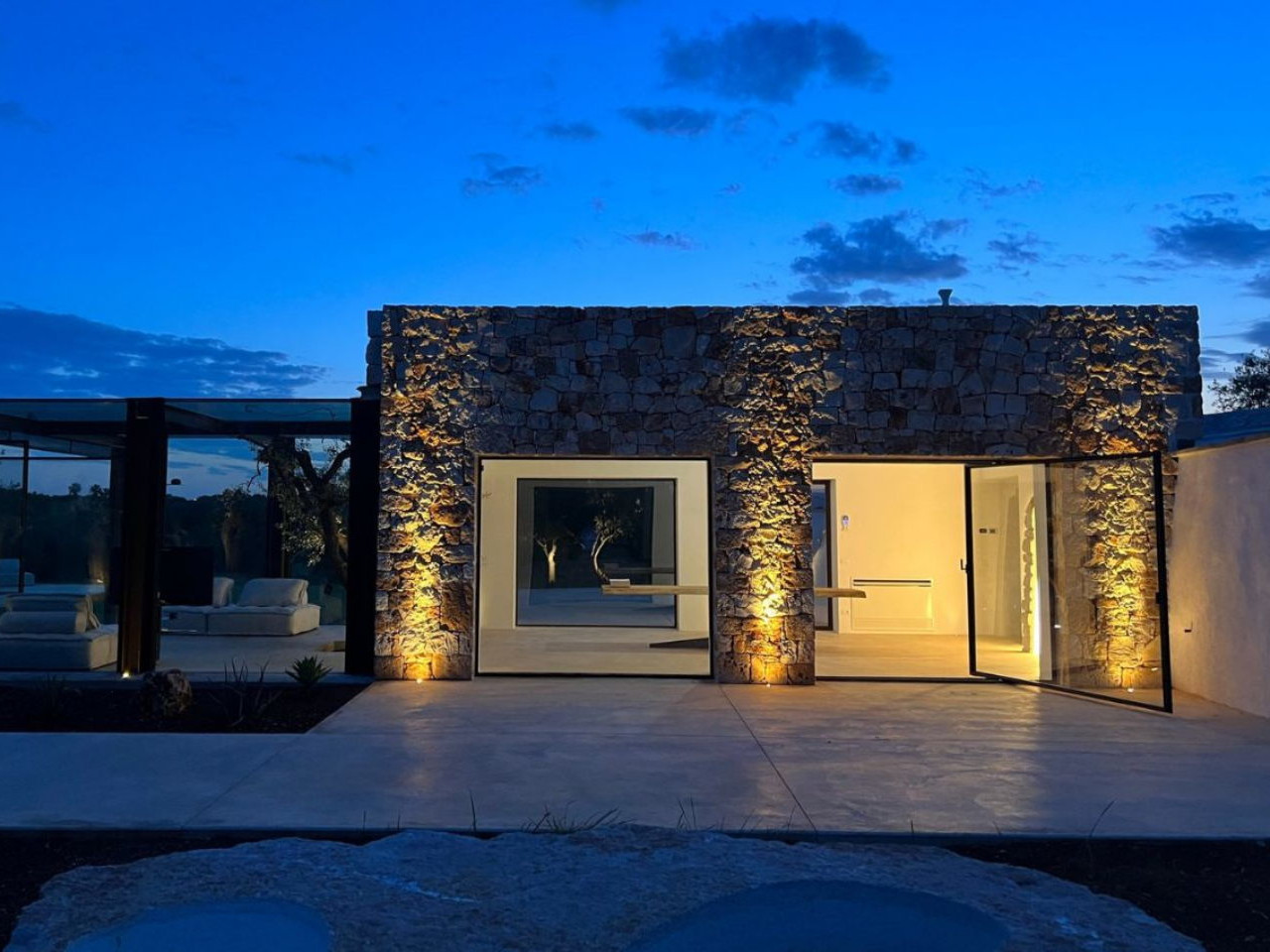
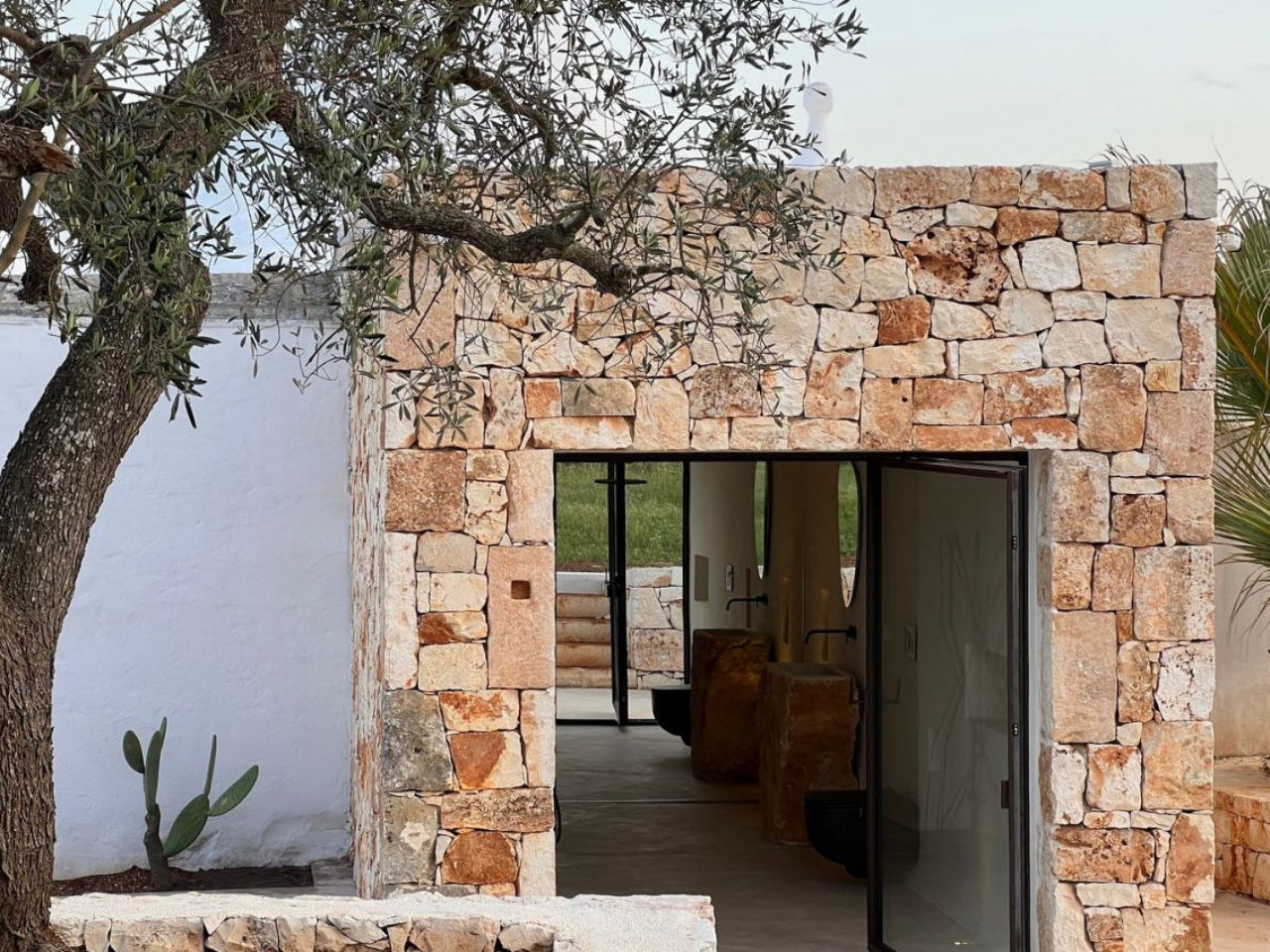
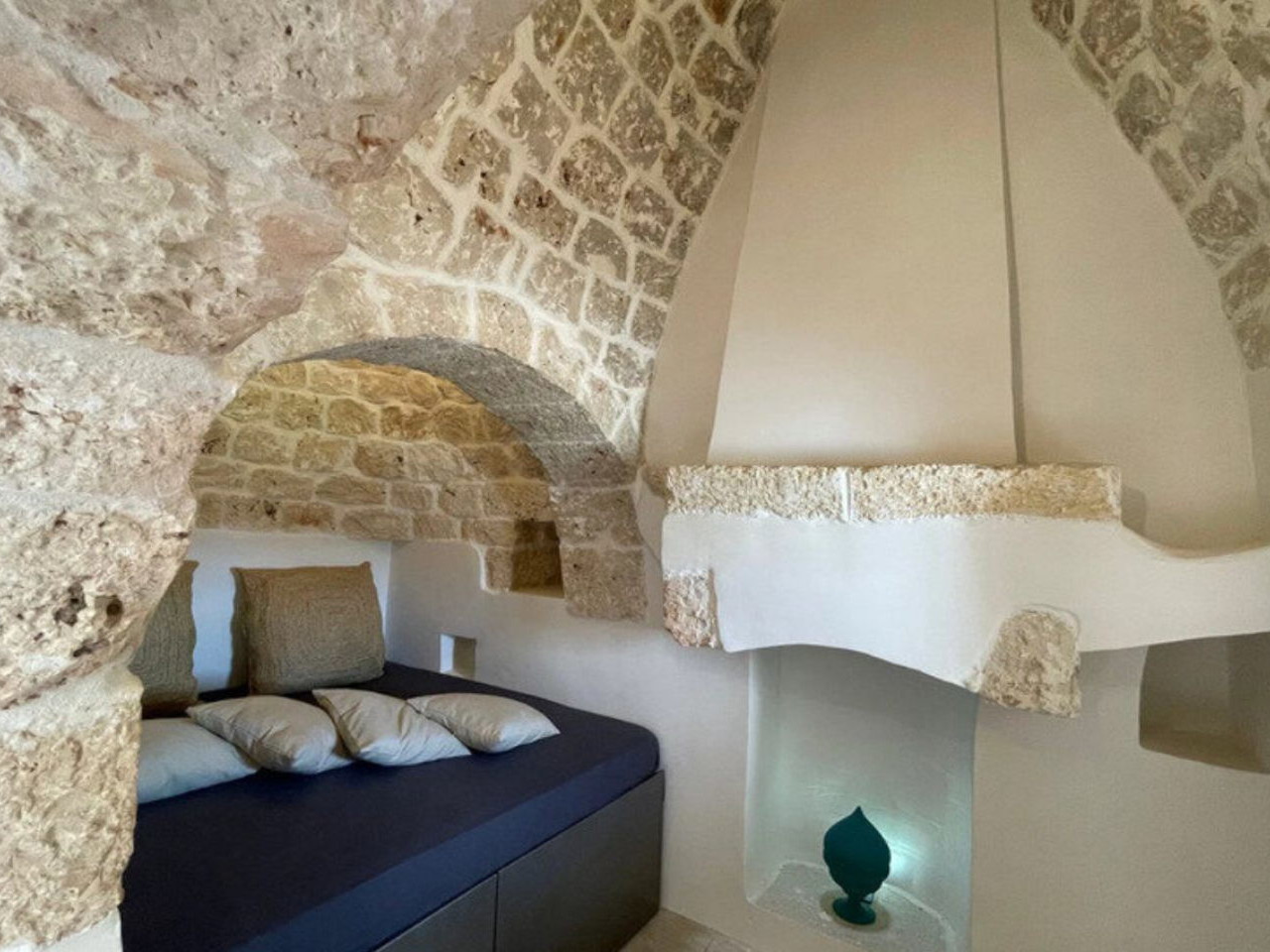
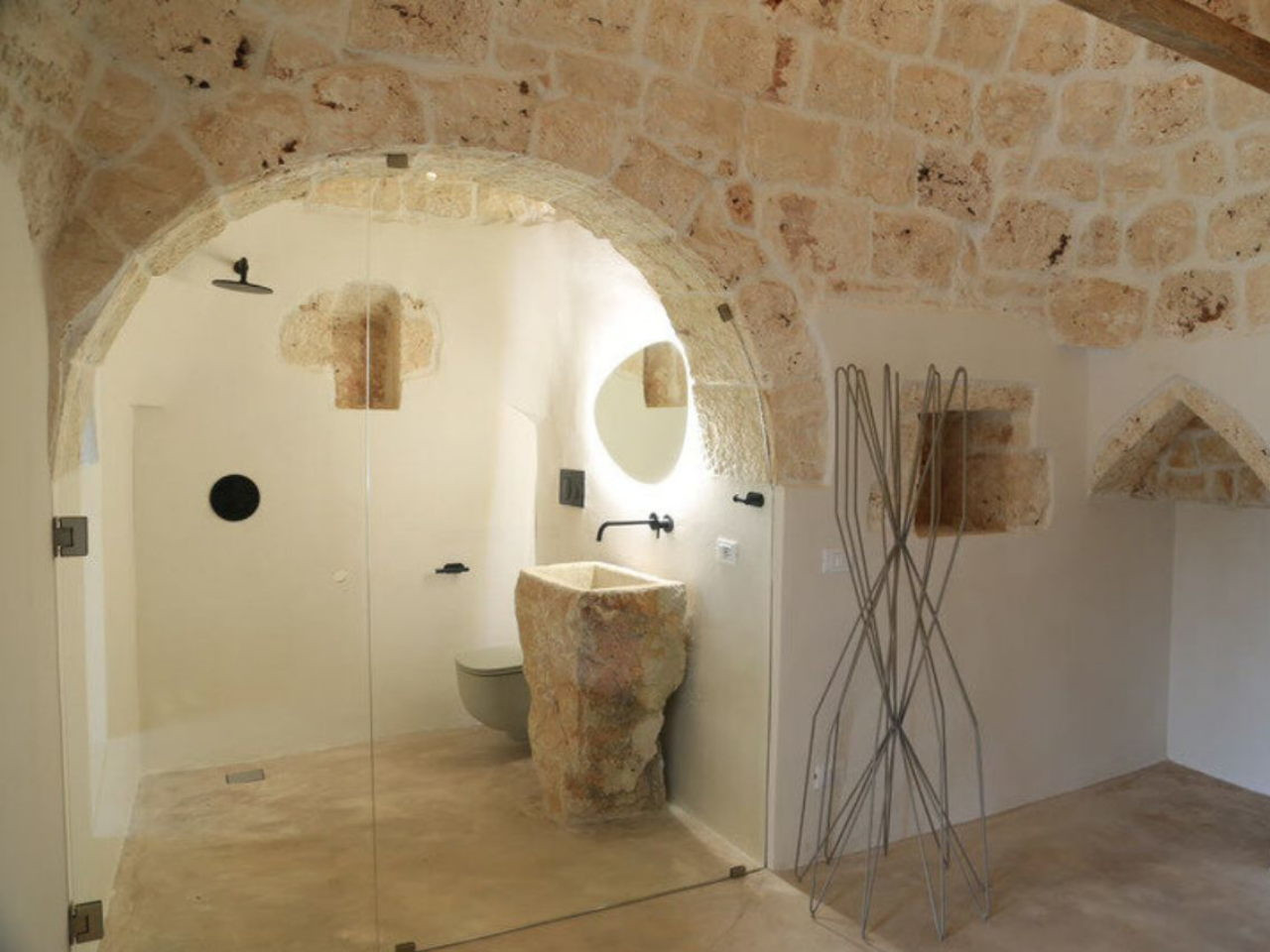
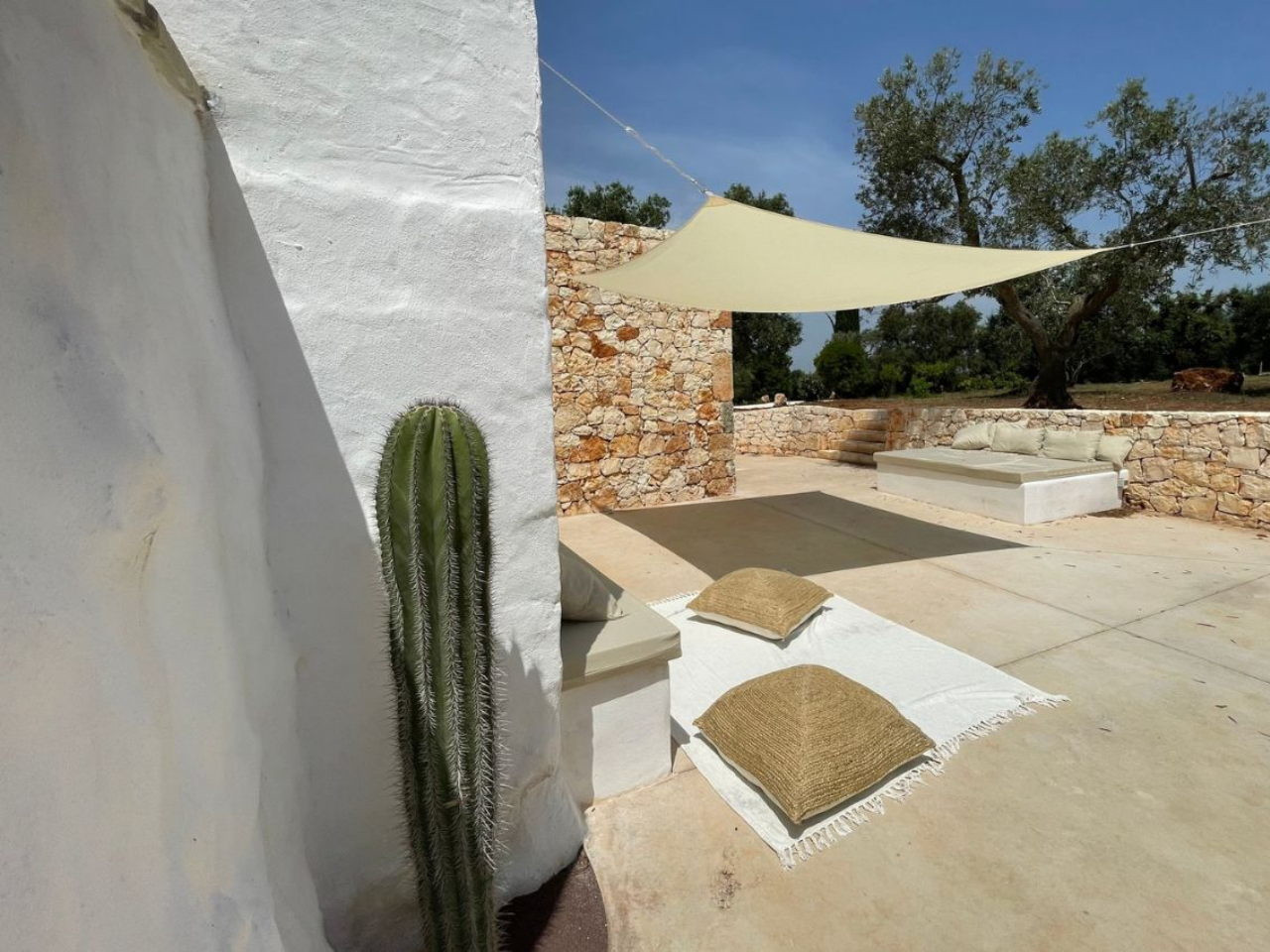
The zoning of the complex is thoughtfully designed to ensure functionality and privacy. The modern living areas are easily accessible to guests, while the bedrooms are nested within the trulli, providing a private retreat however with direct entryways from the outside and inside.
EV Signature’s renovation of the Trulli and Lamie complex in San Michele Salentino is a testament to the potential of blending modern and traditional building methods. By preserving the cultural heritage of the site and integrating contemporary design elements, the architects have created a space that is both timeless and modern. This project not only showcases the beauty of vernacular architecture but also demonstrates how such structures can be adapted to meet contemporary living standards without losing their historical significance, and how even the smallest ‘modern’ element can change users’ perspective.
The post EV Signature Harmoniously Blends Tradition and Modernity in an Italian Residential Renovation first appeared on Yanko Design.